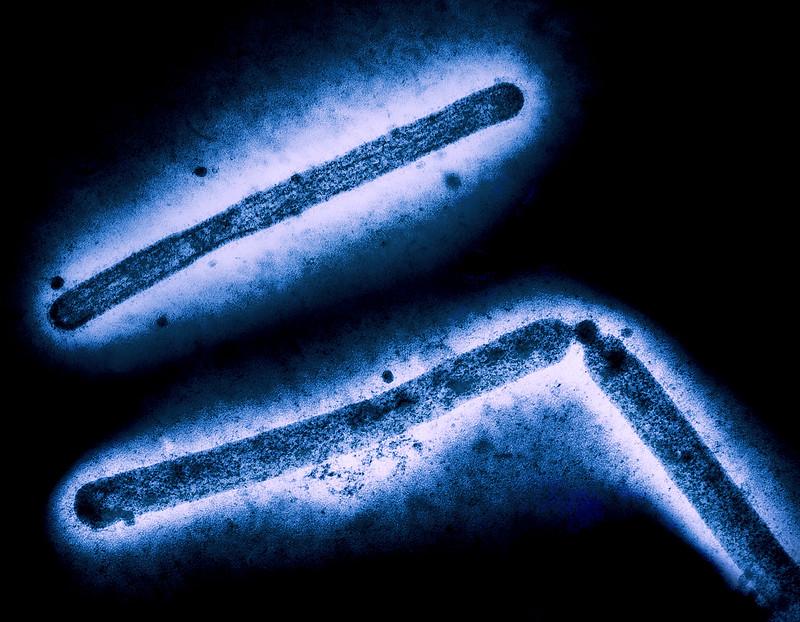
The investigation into a recent human H5 avian flu case in Missouri, the first of its kind picked up through flu surveillance, show that the source still isn't known, but early genetic analysis suggests that the virus is closely related to the one infecting dairy cattle, federal health officials said today.
At the US Department of Health and Human Services (HHS) briefing, Nirav Shah, MD, JD, principal deputy director for the Centers for Disease Control and Prevention (CDC) said state health officials are continuing the investigation, diving deeper into potential exposures.
On the animal side, California reported two more H5N1 outbreaks in dairy cows, as the state continues to investigate how the virus made its way to the farms.
Virus traces show similarity to cow strain
Shah said it wouldn't be unusual to not find a likely exposure source. For example, he said that, of about 500 human swine flu cases identified since 2010, about 8% had no clear exposure to the virus.
The probe hasn't turned up any evidence of human-to-human spread or any unusual rises in flu activity in Missouri, he added. “Evidence points to a one-off case,” Shah said.
The concentration of virus RNA in the patient's sample was extremely low, and so far, CDC scientists haven't been able to piece together the full genome, which might yield clues about the source and flag any potential markers for increased risk of spread. So far, testing hasn't been able to pinpoint the neuraminidase, which is the "N" portion of H5N1.
Though sequencing is still under way, results so far suggest that the virus is closely related to the one circulating in dairy cows, Shah said. "We're throwing everything we've got at this."
We're throwing everything we've got at this.
The patient had significant underlying medical conditions and was evaluated in the hospital for acute chest pain and gastrointestinal symptoms, he said. A respiratory panel was done during hospitalization, and as part of influenza surveillance the results were batched with other patient samples and sent to Missouri's state lab for subtyping. Shah commended Missouri and other states for stepping up their surveillance subtype testing over the summer months, which the CDC had recommended.
Missouri investigators have found no link to consumption of raw milk or other raw dairy products, Shah said.
CDC announces lab partnerships to speed up testing
In related developments, the federal government has lined up lab partnerships worth an initial $5 million with five companies to scale up testing capacity for flu, he said.
The step is an unprecedented shift in working with the private sector and will allow the companies to develop the tests alongside CDC rather than after the fact, he said, emphasizing that the process with make testing available earlier and avoid delays during emergencies.
In the past, tests from the private sector came online too late in the game, he said.
The companies are Aegis Sciences, Arup Laboratories, Gingko Bioworks, Laboratory Corporation of America, and Quest Diagnostics.
Shah said the partnerships also include work on Oropouche virus tests. He said establishing the "warm bases" with the companies isn't a prognostication, but rather a planning step that will eventually allow people to get tested in everyday settings.
H5N1 turns up in more California herds
In California's outbreaks, the virus is the same B3.13 genotype seen in other dairy cow outbreaks, but sequencing on more samples is under way, said Eric Deeble, DVM, acting senior adviser for highly pathogenic avian flu at the US Department of Agriculture (USDA).
California has identified all of its outbreaks through enhanced surveillance in an area surrounding the first detections in the state's Central Valley. Today, USDA's Animal and Plant Health Inspection Service (APHIS) added two more outbreaks from California to its confirmed list, putting the state’s total at eight.
Initial analysis of the virus from the first three affected herds shows no evidence the California cows contracted the virus in a novel way, such as from wildlife or migrating birds.
Deeble said the California Department of Food and Agriculture is working hard to track how the affected herds were exposed to H5N1.
Since March, the USDA has confirmed H5N1 in 203 herds across 14 states.
